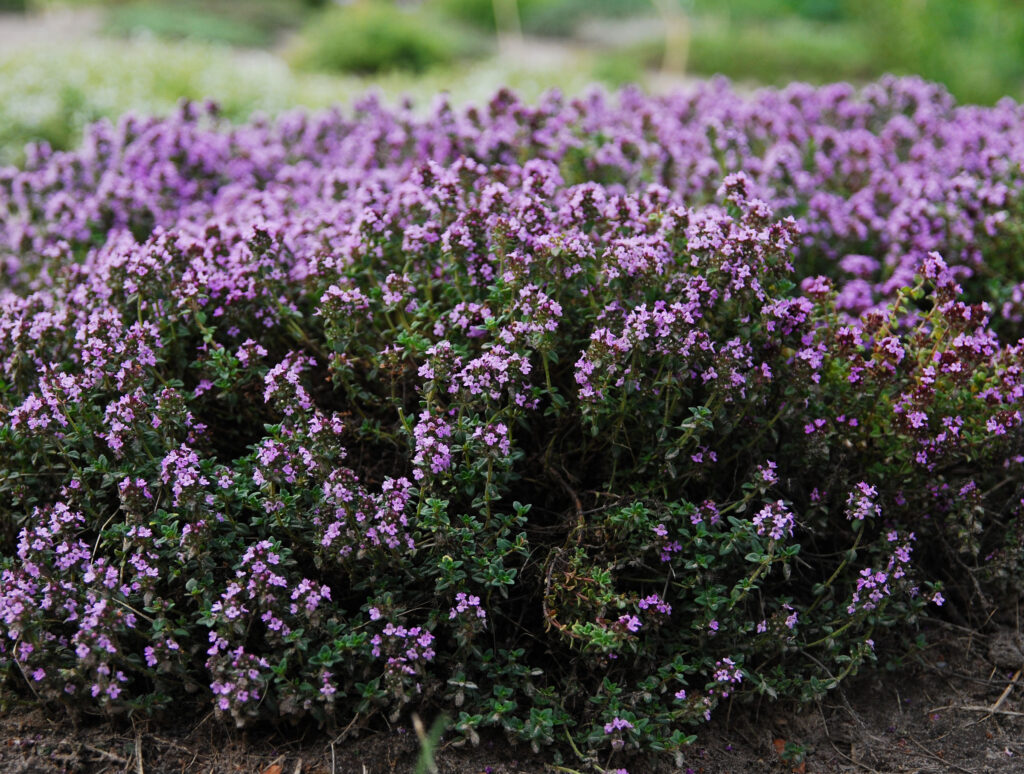One of the most frequently selected plants for growing the dense thick natural carpet is creeping thyme. While this is a stunning plant, it has a tremendously useful form, and so it should not be taken to any outdoor area.
What is Creeping Thyme?
Creeping thyme is one of the low-growing perennial herbs that have an easy attraction of beautiful green color on the ground. This is well-known for small flowers that appear in purple, pink or even white. It only enhances the beauty of gardens, pathways and rock beds. And it is also a perennial, low water demanding plant and holds pollinators like bees.
Also Read:
Children’s Wristband Security: How to Improve Privacy
Benefits of Growing Creeping Thyme
Why choose creeping thyme over other plants? Here are some fantastic reasons:
- Low Maintenance: After it has been established, the creeping thyme will not demand much attention.
- Eco-Friendly: It lowers down the need to mow and water it which are some of the ways of tending a lawn.
- Visual Appeal: Creeping or upright, the combinations of sepals and petals render the plant a sure bet for any garden.
- Durable and Versatile: It is ideal for high traffic area and thrives on spaces in between pavers or on pavements.
Selecting the right type of Creeping Thyme
Since there are so many different types of succulents available, care must be taken to choose one that will properly fit into your landscape.
Types of Creeping Thyme
- Woolly Thyme: Tough, fluffy texture, excellent choice for rock gardens.
- Red Creeping Thyme: Brilliant red flowers which go on a pollinating spree.
- Elfin Thyme: A compact variety with deep green leaves.
- Pink Chintz Thyme: Famous for its dainty pink flowers.
They all come with their own style so combine and complement, so that you can have a lovely and eye-catching garden.
How to Plant Creeping Thyme
Growing creeping thyme is easy but the following of the right procedure makes the process successful.
Best Soil and Location
Creeping thyme also prefers a soil that has a pH ranging from 6.0 to 8.0 and soil that has good drainage facilities. Often grown in full sunlight because it thrives in the presence of direct sunlight. If you find that your soil becomes water logged then drainage may be improved with the addition of sand or gravel.
Planting Techniques
- Space the plants 12 to 18 inches apart to allow for spreading.
- Dig shallow holes, only deep enough to cover the root ball.
- Water right after planting to encourage roots to form.
Care for Creeping Thyme
After your creeping thyme is in the ground, proper care will keep it thriving.
Watering and Fertilizing
This thyme species is drought tolerant but it is recommended that you water the plant often while it is still young to encourage proper root growth. It is easy to grow once established; water it with caution, however, because overwatering causes root rot. Supplement it annually with a slow-release fertilizer containing all the nutrients on this list since the soil may be depleted of these nutrients.
Pruning and Care
Pruning helps maintain the plant’s shape and encourages new growth. Prune it back after flowering to remove spent flowers and prevent it from turning woody.
Common Issues and Solutions
Even a hardy creeping thyme can have problems. Let’s discuss some common problems.
Troubleshooting Guide
- Pests: Are they aphids or spider mites? Use neem oil or insecticidal soap.
- Diseases: Root rot indicates that the soil is not draining; improve soil aeration.
- Overgrowth: Pruning regularly prevents it from taking over your garden.
Decorating Your Garden with Creeping Thyme
Be creative! Use creeping thyme as a living mulch, fill gaps between stepping stones, or along borders in your garden for that fine finish. It is also a good substitute for lawn coverings in smaller areas.
Conclusion
Creeping thyme is just more than a simple ground cover-it’s a statement piece in any landscape. Due to its low maintenance, vibrant blooms, and eco-friendly benefits, it’s worth getting for your garden. Use these care tips and experience a healthy, fragrant landscape that is not only beautiful but also practical.


